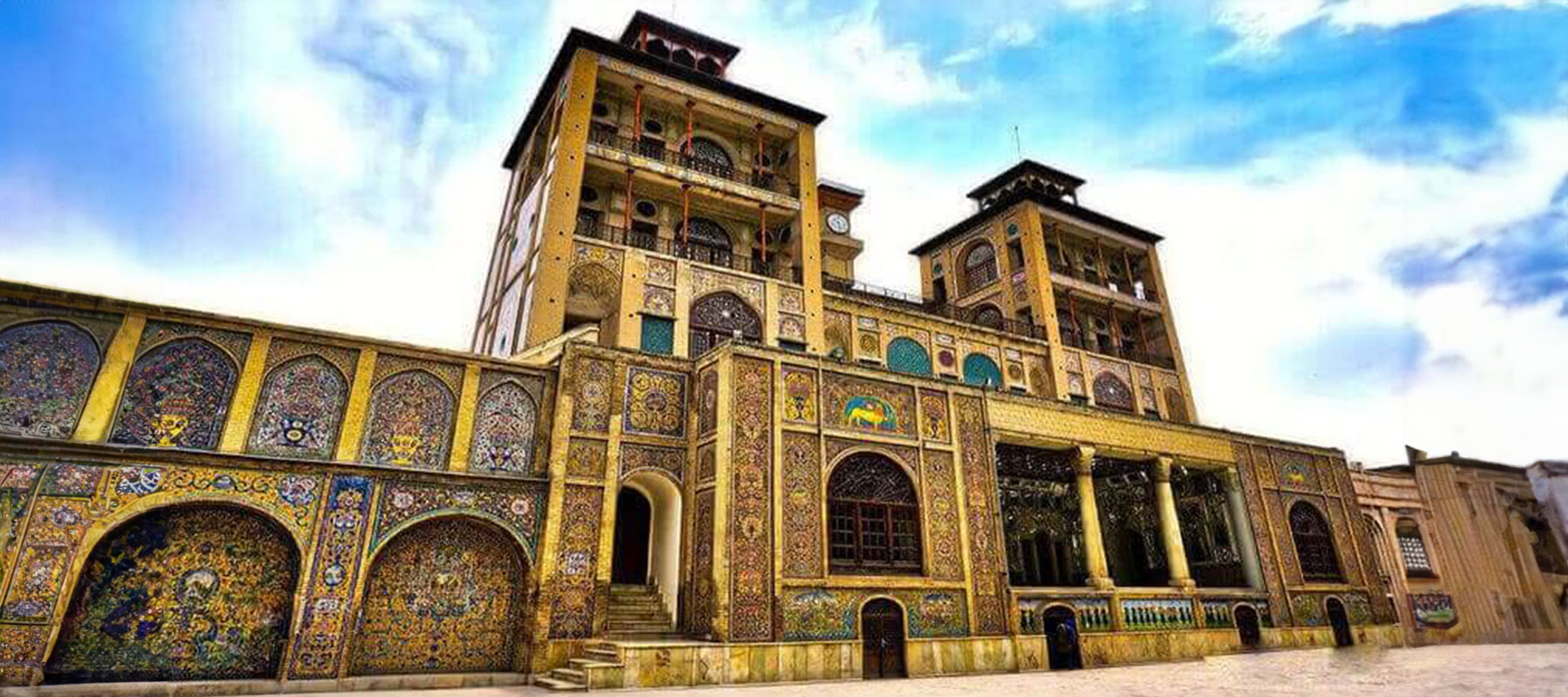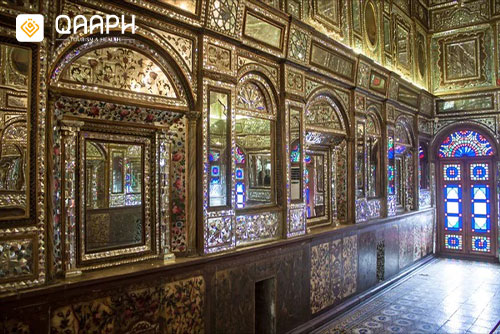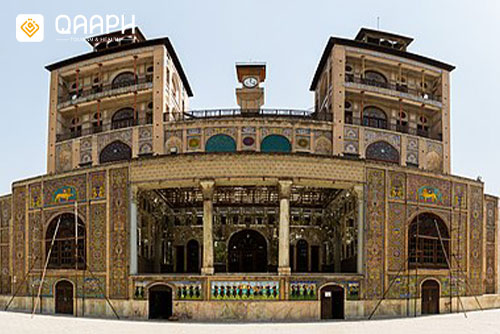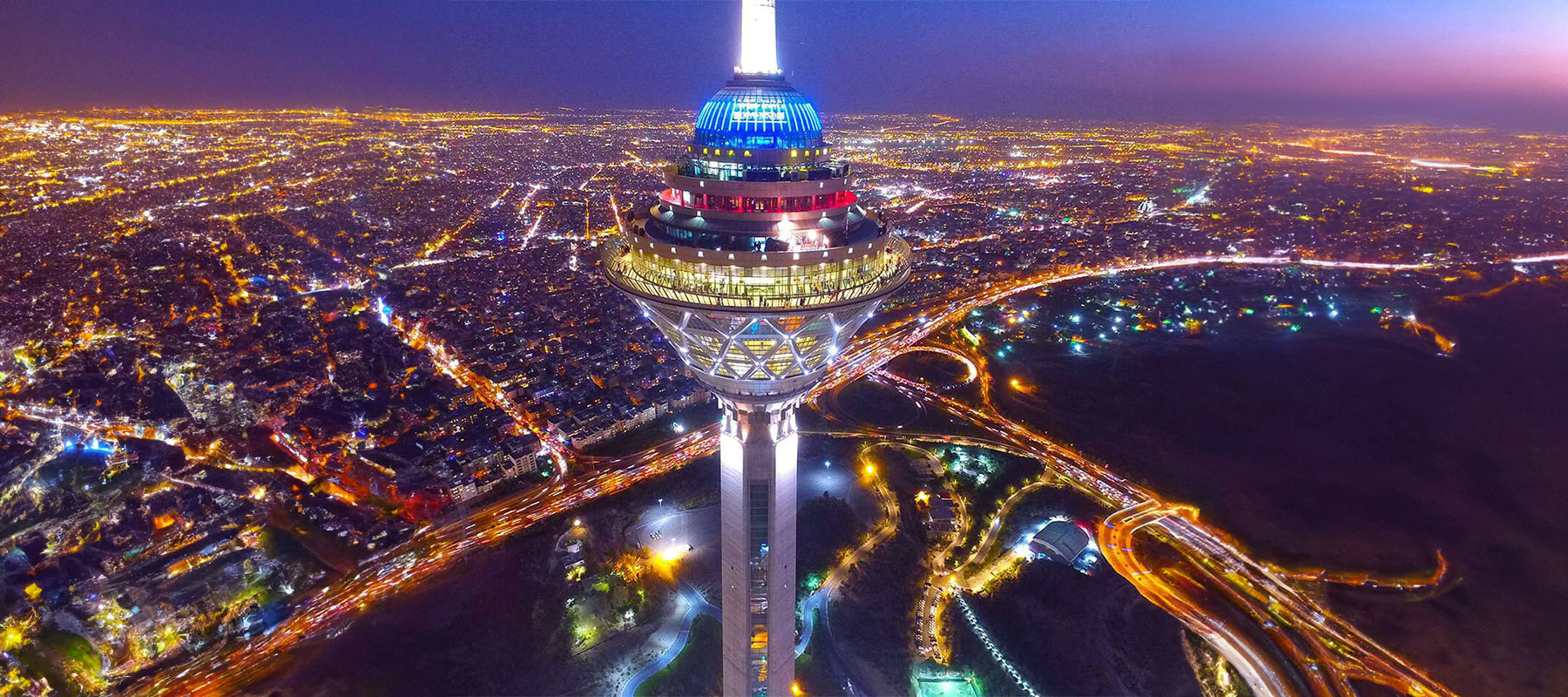
Located on the edges of Tehran's lively Bazaar and the historic 15 Khordad Street, there's a precious place that captures the magnificence of Iran's vibrant history - the Golestan Palace. This area, once the core of Tehran, has seen countless years of history. Today, it stands as evidence of Iran's remarkable architecture and cultural legacy. As you walk on its stone floors, you're not just entering a palace; you're entering a story that spans over 440 years.

Recognized as a UNESCO cultural heritage site, the Golestan Palace is a remarkable achievement from the Qajar era. Despite its age, its beauty remains untouched by time. Picture a lush garden surrounded by plantain and cypress trees, cradling the palace. This green embrace gave the palace its name, "Golestan," which means "rose garden."
Once the home of kings, the Golestan Palace has observed history unfolding within its walls. Today, although only a few buildings survive, the palace still exudes an air of refinement that can transport you to a time of grandeur. Its walls are adorned with intricate paintings and mesmerizing Iranian tile art, forming a visual harmony that echoes the past. this artistic treasure, as Qajar architecture
Why should you explore the enchantment of Golestan Palace?
The Shams-ul-Amarai building within this museum is notable for being the first structure constructed entirely of metal. Inside, you'll find a sizable marble bed intricately crafted from 65 separate pieces. The interior is adorned with captivating mirror work, detailed plasterwork, and exquisite paintings that catch the eye.

The Golestan Palace stands as a historical masterpiece featuring a variety of palaces and royal halls. Its architectural style is rooted in Iranian traditions, yet it has been influenced by European neoclassical design through cultural, political, and commercial interactions. The result is a captivating fusion of Iranian and European architectural elements that captivates any observer and is truly worth visiting.

A significant highlight of the Golestan Palace is its remarkable tilework. These tiles portray a range of themes including myths, hunting scenes, love stories, warfare, landscapes, historical events, kings, court members, officials, and religious motifs. These artistic creations also mirror the impact of increased connections with the Western world and support for artistic endeavors. They skillfully blend Western painting techniques like perspective, shading, and naturalism with traditional Iranian artistic approaches.

Beyond the impressive external facades, the interiors of the Golestan Palace buildings are equally astonishing. Upon entering these structures, visitors are greeted by exquisite mirror work. The Mirror Hall, for instance, took more than seven years to decorate and is truly awe-inspiring.

The gilded adornments on stone surfaces, such as the Sun Room and the Marble Throne, enhance the palace's allure, reflecting a popular style during the Qajar period. Skilled goldsmiths of that time used metal sheets for these decorations, showcasing their craftsmanship. The incorporation of gold into the architectural embellishments, along with an emphasis on durability, further enriches the significance of this complex.
Golestan Palace History
According to documents and the travelogue of Pietro Della Valle, the history of Golestan Palace can be traced back to the time of Shah Abbas Safavid. However, the most significant period in the palace's history is associated with Agha Mohammad Khan Qajar. After his victory over Lotf Ali Khan Zand, Agha Mohammad Khan ascended to the throne in 1210 AH (1831) and chose Tehran as the capital, greatly elevating the importance of the Golestan Royal Palace.
Nasser al-Din Shah Qajar, the first Iranian king to travel to Europe, was also crowned in this palace. As a result, Golestan Palace underwent fundamental changes and adopted a new appearance influenced by European architecture. Throughout the Qajar era, this complex served as a center for governance, royal residence, and the education of artists and architects. This transformed it into a significant hub for artistic production in the 19th century.
During the reigns of Mozaffar al-Din Shah, Mohammad Ali Shah, and Ahmad Shah Qajar, no major changes occurred in this royal palace. However, this period holds great importance due to significant historical events such as the Constitutional Revolution and its consequences. Golestan Palace also underwent changes during the Pahlavi eras.
Considering all this, Golestan Palace has a history spanning more than four centuries, preserving a remarkable collection of Iran's historical heritage. The palace is a valuable witness to some of Iran's most pivotal historical moments. Presently, the palace stands as an integral part of Tehran's intertwined architecture, surrounded by modern and anonymous structures.
Departments and museums of the Golestan Palace complex
Within the palace complex, every area has its own story to tell. The tall trees, fountains, and pools that welcome you as you enter provide an ideal setting for photography. Take your time and let the peacefulness of the place soak in before you start exploring the buildings. Just before you begin your adventure, a small market near the entrance offers handicrafts that you can take home as souvenirs.

Shams al-Amareh: While there's no strict sequence for exploring the buildings, it's recommended to begin with Shams al-Amareh, once seen as a symbol of the capital. This elevated building stands out among the structures of Golestan Palace. Its design draws from European architecture, a legacy of Nasser al-Din Shah.

Salam Hall : positioned in the northwest of Golestan Palace, was initially designed as a museum. However, after Nasser al-Din Shah's exposure to Western museums, its purpose changed. The decision to create a similar institution within the palace complex led to the removal of older structures like the museum room and reservoir. This marked the establishment of Iran's first museum, influenced by photography and museum concepts from the Qajar era. The construction of Talar-e Salam and other sections was completed by the year 1293 AH, with arrangements and decorations continuing until 1296 AH. The hall's name, "Talar-e Salam," originates from the salutation ceremonies held there. Additionally, its connection to Pahlavi kings' coronations led to the name "Coronation Hall."

Immersing in Artistry
Within the palace's treasures rests a masterpiece that transcends reality: Kamal al-Molk's Hall of Mirrors painting. Its intricate details, refined brushwork, and play of light and reflection transport you to a larger-than-life realm. This artwork's artistic brilliance goes beyond the canvas, embodying the grandeur of Golestan Palace.
Golestan Palace: An Eternal Voyage
Golestan Palace transcends being merely a palace; it's a voyage across history, culture, and artistic excellence. Walking through its corridors and experiencing its majestic halls feels like stepping back in time, enchanting everyone who witnesses it. A visit to Golestan Palace is not just about seeing sights; it's a deep dive into Iran's rich history, a journey that sparks creativity and deepens our appreciation for our collective human legacy.
Getting to Golestan Museum in Tehran
Embarking on a journey to Golestan Palace? Before you step into a world of historical elegance, it's important to know how to reach this magnificent destination. Tehran's bustling streets offer a few options for a seamless trip.
By Car: If you choose to drive, keep in mind that certain streets leading to Golestan Palace, such as Bab Homayun, Sur Esrafil, Davar, and Sabzeh Square, are paved and off-limits to vehicles. You'll need to park your car in the surrounding streets and cover the remaining distance on foot. Also, be aware that this area falls within the scope of the city's traffic plan, so plan accordingly.
By Metro: The metro is one of the best ways to reach Golestan Palace. Head to 15 Khordad station, and a short stroll will unveil the palace's grandeur. Consult the Tehran metro map to navigate this route seamlessly.
By Bus: Buses offer another viable option. Choose routes that intersect with Khayyam Street and have a stop at Golobandak station. Alternatively, taxis from various corners of Tehran can drop you off at Golubandak intersection. You can find these taxis at popular locations like the second floor of Sadeghieh, Fatemi Square, Elkhebal Square, Jamoori Eslami St., and Razi Square.
Cost and Time Suggestions: Crafting Your Visit
Golestan Palace invites you between 9:00 am to 6:00 pm in the first half of the year and until 5:00 pm in the latter half. Ticket sales end at 4:30 pm. Dedicate about two hours for exploration, preferably in the morning for the best experience. Avoid evening visits to ensure you absorb every detail. Remember to secure your ticket for this extraordinary site.
Choosing the Right Time: Seasonal Charms
Tehran gracefully flaunts its four seasons, each offering distinct allure. Golestan Palace welcomes you year-round, each season framing the city differently.

Exploring Nearby Gems
Extend your exploration beyond Golestan Palace to discover the jewels surrounding it:
Tehran Grand Bazaar: Just 350 meters away, this vibrant marketplace beckons with its rich tapestry of goods and history.
Historical House of Mostofi al-Mamalek: A mere 650 meters from the palace, this house unfolds stories of yesteryears.
City Park: At a proximity of 700 meters, the park offers a serene escape from the city's hustle.
Oudlajan Historical Market: Venture 1 km and step into the past in this captivating market.
Retreats for Rest: Nearby Accommodations
If you're seeking nearby accommodations, the following hotels await:
Amir Kabir Hotel: A mere 450 meters from Golestan Palace, this hotel offers convenience and comfort.
Akhot Hotel: At 700 meters, this establishment presents a tranquil haven after your explorations.
Shahriar Hotel: Located 1.6 km away, it's a suitable option for those seeking comfort within proximity.
Tehran Ferdowsi Grand Hotel: A bit further at 1.8 km, this hotel welcomes you with its gracious amenities.
Culinary Adventures: Nearby Eateries
Satisfy your appetite at these nearby restaurants and canteens:
- Muslim Restaurant
- Sharaf al-Islami Restaurant
- Shamshiri Restaurant
Get ready for an incredible adventure! Qaaph invites you to come and explore this amazing destination. Don't miss out on the chance to discover the beauty and excitement that's waiting for you here. Join us for an unforgettable experience!
Related Blog
03 Aug 2023 | Travel in Tehran
Chitgar Lake
Chitgar Lake: A serene artificial lake in Tehran, Iran. Offers boating, picnicki...
04 Aug 2023 | Travel in Tehran
Tabiat Bridge
Tabiat Bridge: An iconic three-level bridge in Tehran, Iran. Blending architectu...
04 Aug 2023 | Travel in Tehran
Milad Tower
Milad Tower: A striking landmark in Tehran, Iran. Among the world's tallest towe...

.jpg)



Comments
Total 0 comment in the post